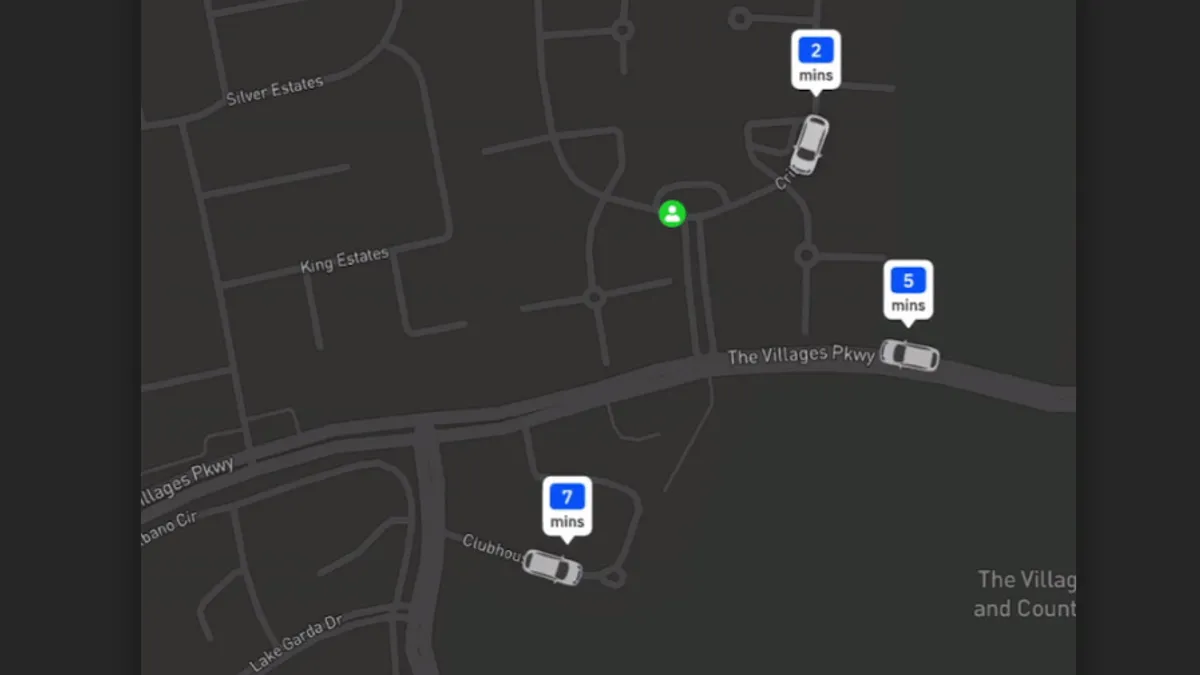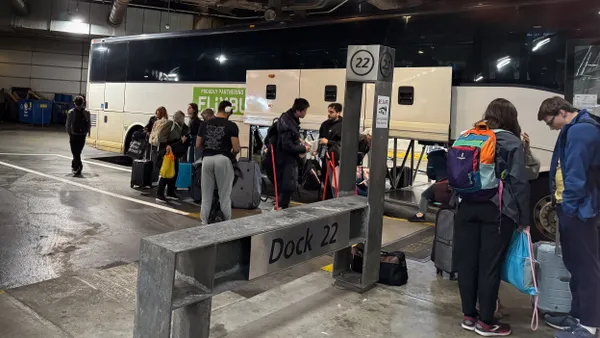Dive Brief:
- Open-source software from startup rideOS will help any company, including one that uses autonomous vehicles (AVs) to launch its own ride-hailing service. The Ridehail Platform includes apps for vehicles or drivers and riders, as well as application programming interface (API) software on the back-end.
- The API software can help with fleet management, handle dispatching rides and optimize the routes the vehicles take while picking up and dropping off passengers.
- The company said it partnered with AV technology companies Voyage and HERE Technologies to provide software, and may use it in logistics, delivery and robotics in the future.
Dive Insight:
The software is designed to help companies that use AVs or human drivers to run ride-hailing services more efficiently, and it could encourage self-driving options to hit the market more quickly, said rideOS CEO Justin Ho in an interview with Smart Cities Dive.
"The problem it solves is for AV companies that want to start testing an end-to-end ride-hailing service, they can get started and their employees can start running a full ride-hailing end-to-end test immediately," Ho said. "For other ride-hailing companies that might be looking to get a company to help with dispatching problems or with their pool trips, we also have different integration layers and APIs that will help them be able to get their networks to become most efficient."
Others in the industry have said that the growth of AVs will require intelligent, automated systems to manage them. This software, believed to be the first of its kind, helps with that goal. Last year, Fleetonomy co-founder and CEO Israel Duanis told Smart Cities Dive that fleets will "need to be data-driven, they will need to be automated in their decision-making, everything."
Hype continues around using AVs in ride-hailing services. Tesla CEO Elon Musk promised the company will have a robotaxi network by next year, although others are not quite so sure that AVs will be available for mass use so soon.
On Lyft's Q2 earnings call last week, CEO Logan Green said the path to autonomy is a "very long game," signaling that while research and development is ongoing, there is a lot of work ahead.
Software such as this could help encourage the development of ride-hailing services underpinned by AVs, and could also help other companies break into the space with human-driven cars, although it will be difficult in some parts of the world to shake Uber and Lyft's stranglehold.
Ho said that software such as this can help move the industry forward, especially its interactions with AVs.
"It's the thesis that if you start doing end-to-end ride-hailing testing and start learning about the pick-up problems, the drop-up problems and with a lot of iteration, we can start moving towards and getting to no safety driver at scale faster," Ho said.












